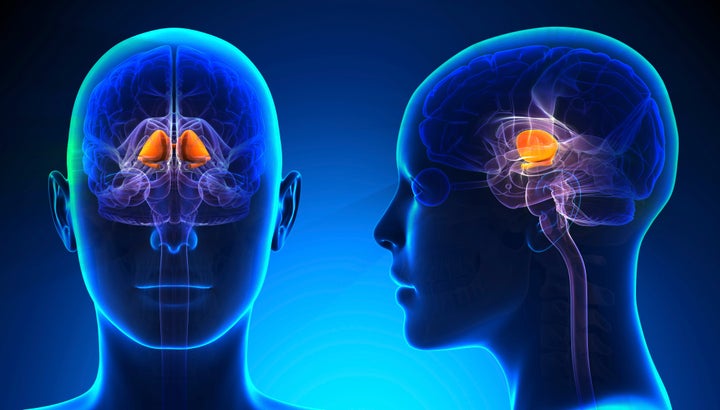Having trouble keeping your New Year's resolution to ditch the sweets? Blame your brain.
A new study from researchers at Duke University finds that a sugar habit leaves a lasting imprint on certain brain circuits, making it incredibly difficult to stop eating sweet food. These marks, in turn, prime us to give into our cravings.
With this new knowledge of how sugar and other vices affect the brain, researchers may one day be able to target these circuits to help people kick bad habits and form healthy ones.
Scientists have known for some time that sugar can be addictive, hijacking the brain's reward networkings and creating a cycle of vicious cravings. But the new study, which was published in the journal Neuron on Thursday, is helping neuroscientists to better understand why it's so hard to beat those cravings.
“You could imagine a range of possibilities for using this information to help people with bad habits."”
For the study, the researchers trained mice to develop a sugar habit. They taught them to press a lever in order to receive tiny sweets. The mice who became hooked on the sugar couldn't stop pressing the lever, even after the treats were taken away.
Then the researchers compared the brains of the mice who developed a sugar habit with those who managed to break the habit, focusing specifically on the basal ganglia -- a network of brain regions responsible for motor actions and compulsive behaviors, such as drug addiction.
In the basal ganglia, there are two main pathways: One that carries "go" signals, which spur us to action, and one that carries "stop" signals, which prevent us from taking action. In the case of habits and addictions, these "stop" signals are generally seen as the factor that helps prevent the behavior.
To the researcher's surprise, both of these pathways were more active in the sugar-addicted mice.
However, the researchers noticed that in the brains of the addicted mice, the "go" pathway would turn on before the "stop" pathway. In the non-addicted mice, the "stop" signal preceded the "go" signal. The differences were so marked that the researchers could predict which mice would be able to break the sugar habit when they looked at the isolated signals in their brains, according to study co-author Nicole Calakos.
"We found that the strengthening of both cell types was a strong predictor of whether the mice had behaved habitually or not," Dr. Calakos, an associate professor of neurology and neurobiology at the university, told The Huffington Post. "But we saw another feature that also strongly predicted how habitual the mice were – and this suggested that the two cell types may be in a race to influence our actions, with whichever signals first winning. In the most habitual mice, the 'go' cells tended to fire before the 'stop' cells. While in the least habitual mice, the 'stop' cells went first."
The researchers also found that changes in stop and go activity occurred across the entire basal ganglia, not just in specific types of brain cells, which suggests that one bad habit might make the brain more susceptible to other bad habits as well.

The researchers concluded that weakening the excitability of "go" neurons could be helpful for breaking bad habits.
"You could imagine a range of possibilities for using this information to help people with bad habits, from simple behavioral strategies that correlated with reduction in activity of this brain region to medicines targeting these cells," Calakos said.
Targeting these circuits with deep brain stimulation -- similar to the types of stimulation used for Parkinson's Disease -- could be another helpful possibility for breaking bad habits. However, Calakos noted that a great deal of further research is needed before any such strategies can be devised.
The research also may have important clinical implications. For instance, while habits can help us to function more efficiently in our everyday lives, there may also be some psychological conditions that result from disruptions of normal habit learning in the basal ganglia, such as Obsessive Compulsive Disorder.
"We don’t know yet whether the brain changes we see in habit are involved in compulsive behaviors," Calakos said, "but we have a mouse that models features of OCD and are currently examining the similarities and differences of their brains to 'a brain on habit.'"
Also on HuffPost:

